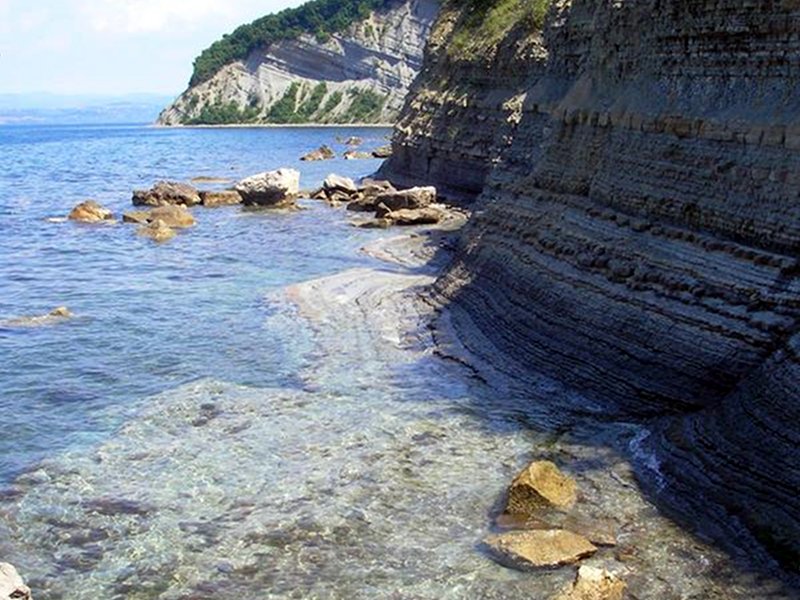Protected Area
Identity Card
- Land Surface Area: 430.00 ha
- Country: Slovenia
- Park Authority: Javni zavod Krajinski park Strunjan
The park stretches along the Slovenian Coast between Izola and Piran.
Strunjan Landscape Park is a place of superlatives, because on its small surface we can find the highest flysch cliffs, the longest portion of natural coast in the bay of Trieste, the only Slovenian marine lagoon, the smallest Mediterranean salt pans and a very well preserved cultural landscape. In order to keep it that way, visitors are invited to respect some rules.
Saltworks in Strunjan
The salt pans in Strunjan, which were built in the plain of the river Roja, were once one of the three saltworks operating in the Piran municipality. The Sečovlje saltworks were set up on the plains of the river Dragonja, and the Saint Lucia ones by the river Fazan. The latter no longer exist.
The salt pans are the work of human hands. They are also a technical, environmental, ethnological and aesthetic monument, specific and very rare. From the standpoint of protection the saltpans are particularly important because of the rare ecosystems and plants growing in saline environment, and which are thus called halophyte. Two plants of the salt marshes give specific colors to the landscape: the first one is Salicornia europea which in autumn makes the salt pans red; the other one is Limonium angustifolium, which has purple-blue flowers. Of course, these are not the only members of the halophytes family which found home in the salt of Strunjan.
Today in Strunjan there is only the church of St. Mary's Apparition, but in the past three more churches stood in the area: the churches of St. Christopher (near the saltpans), St. Spirit (now within the hotel complex "Salinera") and St. Basso (now Villa Tartini). There the inhabitants prayed for a good harvest of salt and citrus fruits.
The salt of Piran has not always been as white as it is today. Sometimes the clay mixed with salt, which thus assumed a brownish color and was not good for trading. During the 14th century, the "petola" technique was therefore introduced: this is an artificially grown gypsum crust that separates the salt from the muddy base. Petola contributed to the quality of salt, which could be harvested cleaner and whiter, and consequenty sold at higher price.
The name of Strunjan
It is said that local shepherds were very skillful in playing string instruments ("strune"), maybe guitars or mandolins, and that passers-by used to say how beautifully these shepherds played on the strings ("strunjajo").
Strunjan nature reserve
The reserve is a part of the Strunjan Landscape Park and encloses four kilometers of the northern coast on the Strunjan Peninsula between the Simon and Strunjan Bays, together with a some 200 meters wide water belt. The reserve covers 160 ha, and the land/sea ratio is 1:2.5. Among the most distinctive parts of the reserve is the precipitous wall of the Strunjan cliffs, where interesting geological and geomorphological occurrences can be admired, such as sandstone and marl layers, rock shelters, microtectonic joints, etc. Sumac, Manna ash, brooms and canes grow in the rock shelters and on the upper edges.
The sea floor, which is at first rocky but further out covered with silt, is a home to numerous organisms. Particularly interesting are Meseev zaliv (moon Bay) with its underwater prairies strewn with Fan Mussel and Spirographis, and the execeptionally thick growth of seaweeds off Cape Ronek. Respecting the rules for conservation is fundamental in order to preserve the local biodiversity and natural features.








